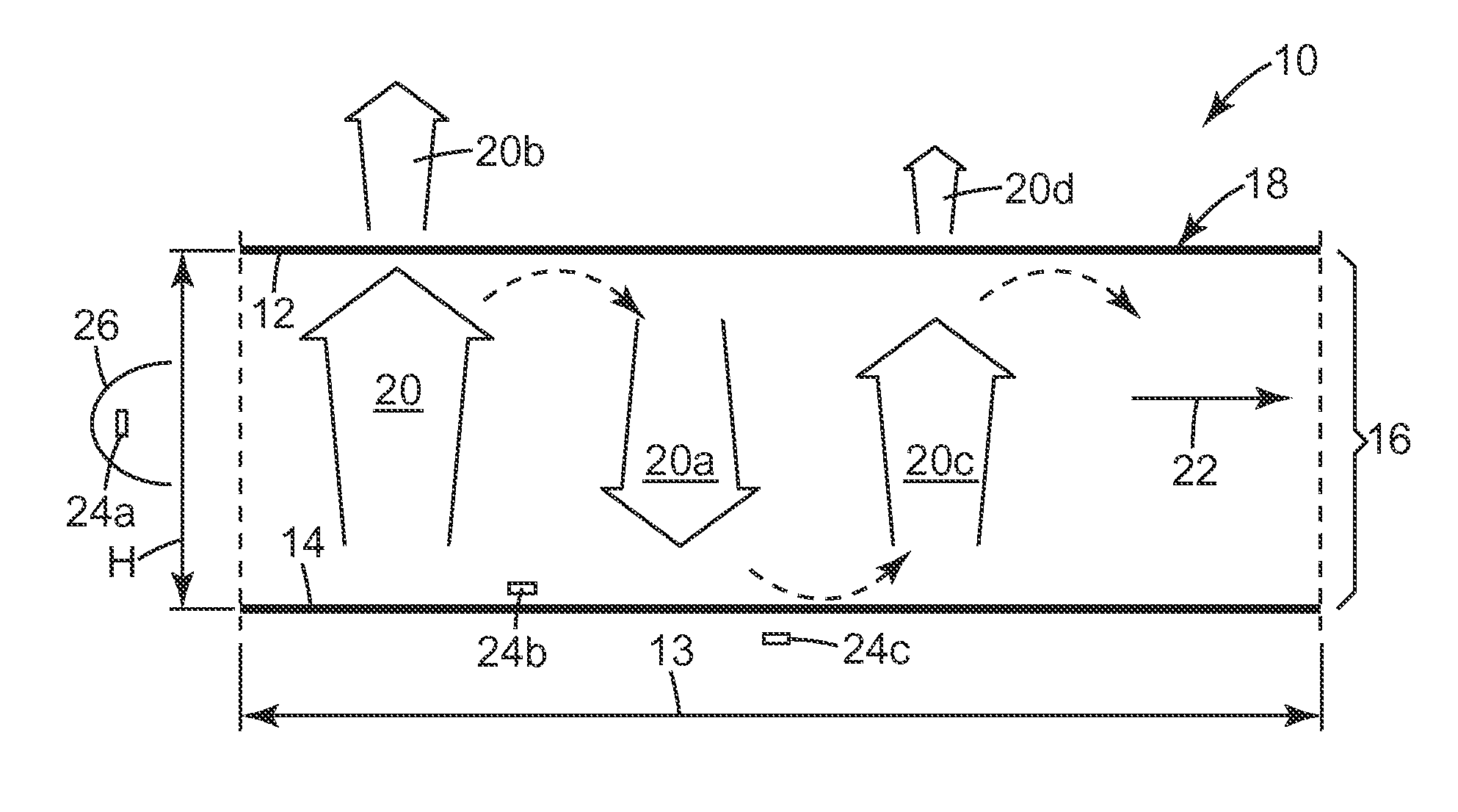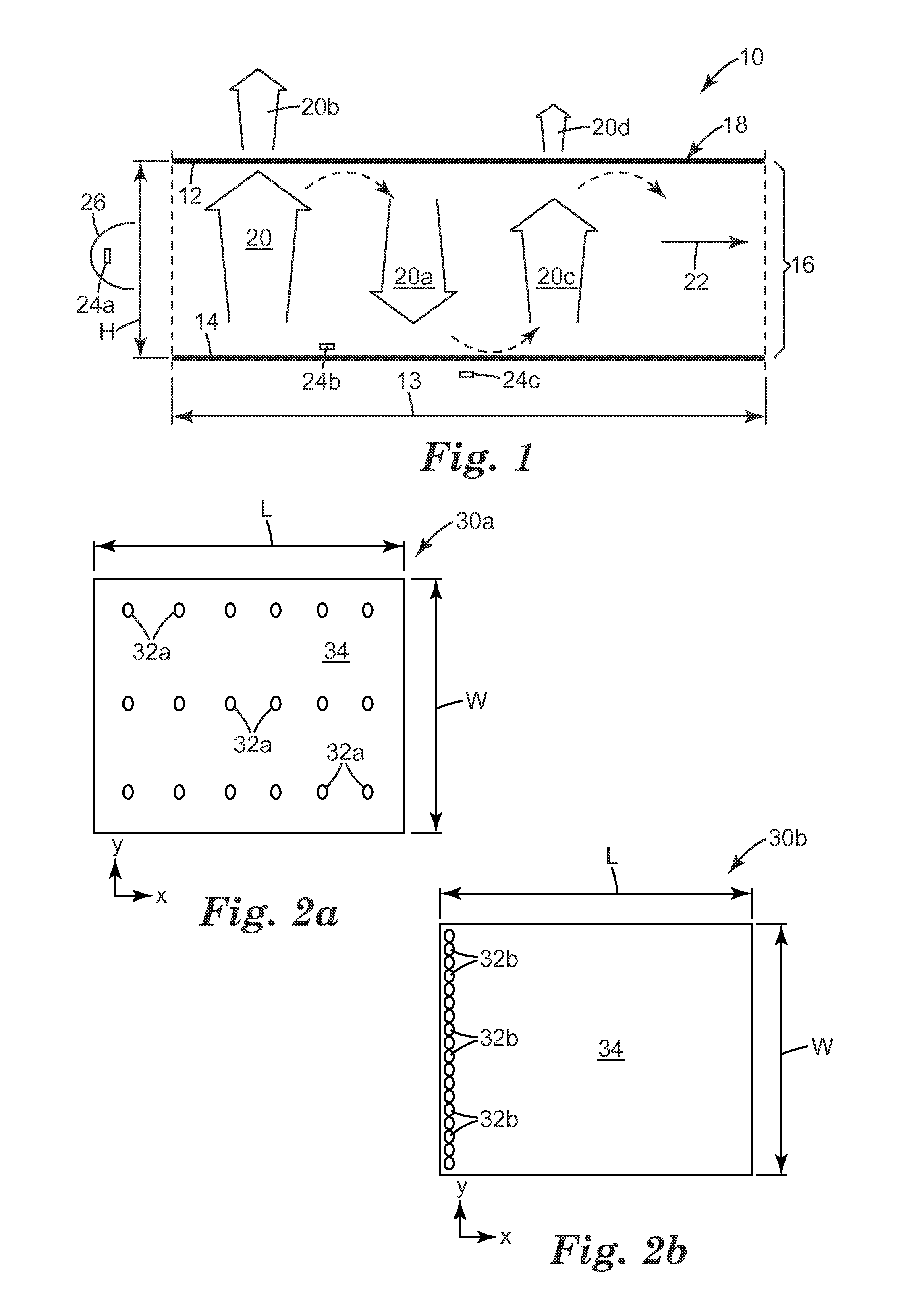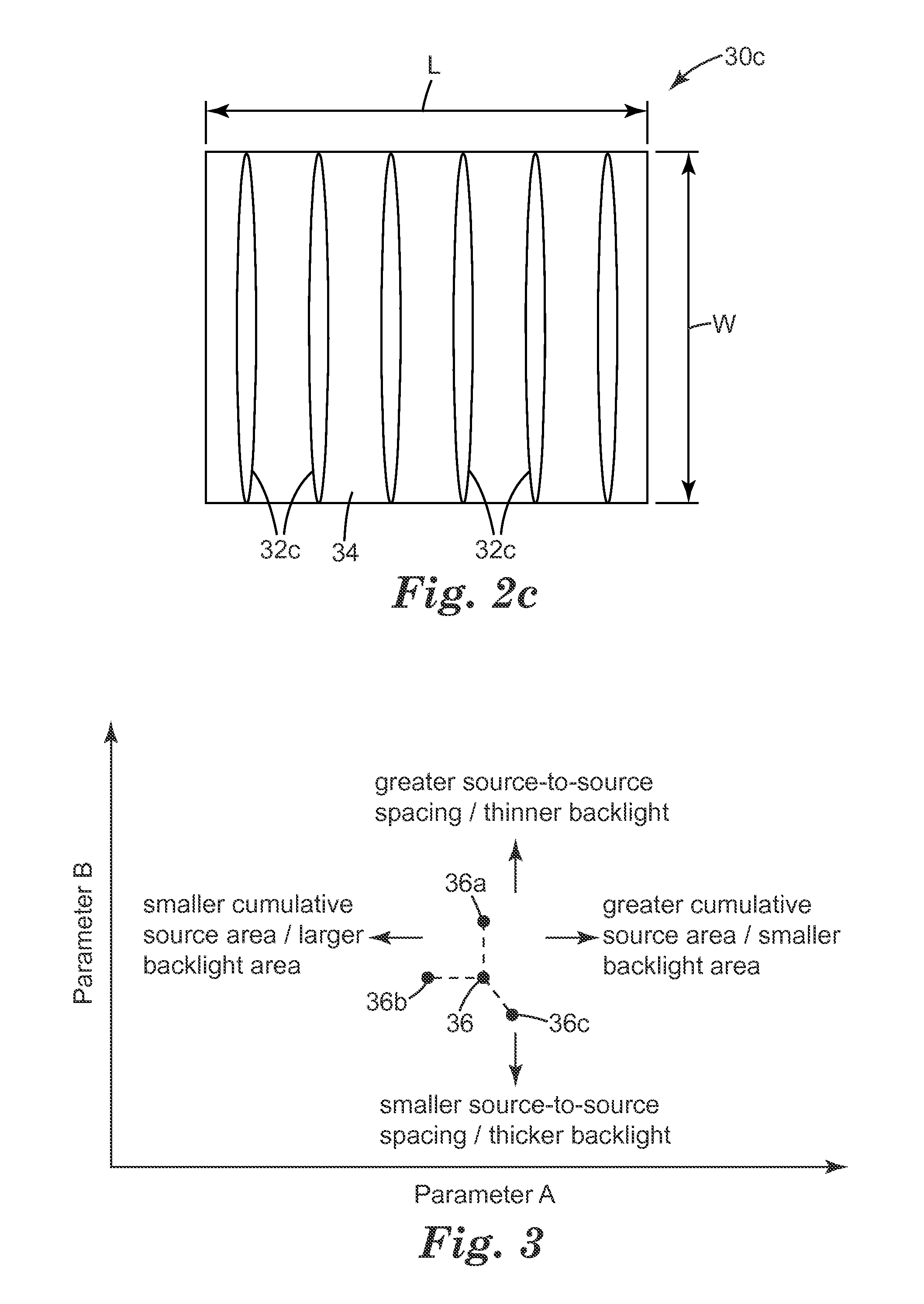Thin hollow backlights with beneficial design characteristics
a technology of design characteristics and backlights, applied in the field of extended area light sources, can solve the problem of achieve the effect of reducing the mass of the backlight, highly resistant to source failure, and only modest reduction of brightness uniformity over the output area of such a backligh
- Summary
- Abstract
- Description
- Claims
- Application Information
AI Technical Summary
Benefits of technology
Problems solved by technology
Method used
Image
Examples
example 21a
[0112]the output region of the Edge-Lit, Hollow Backlight was covered by a reflective polarizer (APF mounted on an acrylic plate) which was placed over the output area of the backlight. All of the LEDs (red, green, and blue, except for the single green LED mentioned above, for a total of 4R 7G 4B) were turned on to produce white light. The backlight was bright close to the LEDs and visibly darker at the far end (away from the LEDs).
example 21b
[0113]the same configuration as for Example 21a was used, but only the green LEDs were powered (except for the single green LED mentioned above, for a total of 7G). The backlight appeared much brighter close to the LEDs and darker at the far end (away from the LEDs).
example 21c
[0114]the same configuration as for Example 21a was used, but only the four green LEDs of the right bank of LEDs were powered (for a total of 4G). The backlight appeared much brighter on the right side close to the LEDs and was darker at the far end (away from the LEDs) and also darker on the left side where the LEDs weren't lit.
PUM
 Login to View More
Login to View More Abstract
Description
Claims
Application Information
 Login to View More
Login to View More - R&D
- Intellectual Property
- Life Sciences
- Materials
- Tech Scout
- Unparalleled Data Quality
- Higher Quality Content
- 60% Fewer Hallucinations
Browse by: Latest US Patents, China's latest patents, Technical Efficacy Thesaurus, Application Domain, Technology Topic, Popular Technical Reports.
© 2025 PatSnap. All rights reserved.Legal|Privacy policy|Modern Slavery Act Transparency Statement|Sitemap|About US| Contact US: help@patsnap.com



